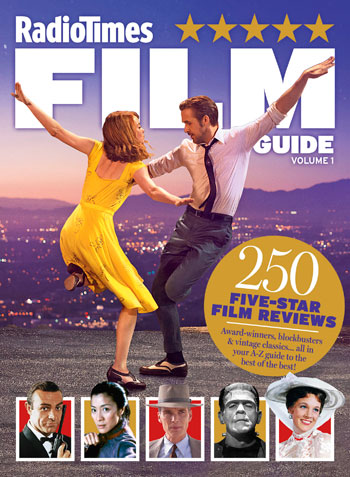
There was much for Radio Times to celebrate in 2023, its centenary year. But while proud of its history, Radio Times Managing Director Dominic Murray’s sights are set firmly on building its future – by evolving its subscription proposition, developing existing and new revenue streams, and maintaining its relevance in the fast-moving and ever-changing world of TV and radio broadcasting and content streaming.
“People come to Radio Times for a definitive guide – guidance is our anchor and purpose. We’ve had a good run at it, and this has been helped by how, throughout our existence, we have constantly evolved,” he says.
“And whatever else changes, because of the authority and voice we have, guidance – whether that’s for major sporting event like the Olympics, a major national event like the King’s coronation, or to navigate Christmas – remains our real opportunity.”

Murray moved to Radio Times to take over as MD in October 2020 from BBC Gardeners’ World Magazine, its Immediate Media stablemate, where he had been publisher since 2003 and MD for Immediate’s Gardening & Parenting portfolio since January 2019.
“I arrived full of admiration for how well Radio Times had pivoted its way of working for the pandemic, and how successful the brand was and still is,” Murray recalls.
“So, my job really was to evolve that – continuing to ensure it remains relevant and a must-read is a high priority. Lots of people came to Radio Times during the pandemic and it was essential to work hard to keep them.”
A trusted guide
Radio Times has a loyal and well-established audience.
The print edition’s readership is currently 1.1 million (TGI GB 2023) with an average age of 61. Its website RadioTimes.com, meanwhile, attracts a wider audience with 20 million monthly unique users (with an average age ten years younger).
With more choice of viewing and listening than ever before, viewing habits have changed – from terrestrial and scheduled and broadcast content to more on-demand and content streaming – and all this has grown demand for guidance.
True, availability of listings, recommendations and reviews is now widespread.
But the Radio Times brand’s authority, people’s trust in it, and the respect it has in the TV and radio production industry – and the access to top production and acting talent it has as a result – all adds up to a considerable draw.
“It is important for us to be relevant to a wide age group,” Murray says. And for certain content verticals – notably sport and gaming – and content formats, audiences for Radio Times content skews younger.
Besides, mindset is more important than demographics.
“The Radio Times audience is curious, interested and want to be informed. They want to go deeper on the shows they love and also to be introduced to shows they don’t yet know. We think that exists in a wider group than we are currently reaching,” he explains.
And that means considerable scope for further growth.
Subs-focused
Subscriptions – already an important pillar for Radio Times – was one of Murray’s immediate priorities on joining.
He references the success of the introduction by BBC Gardeners’ World Magazine of a subscriber club and premium digital access during his tenure, both of which have since been developed further. And, he says, the two brands have a number of similarities.
“Both teams are incredibly talented and passionate about what they do,” he begins.
“Both really understand their audiences and are very good at creating content for them that is trusted and the highest quality. And both have a reader relationship that tends to be long-term.”
Further, both are brands “that really matter” to their audiences as they help them do what they really love and want to do – things that can help create a sense of community and fuel loyalty.
They evoke and enjoy brand love. And for a publisher, brand love fuels a clear sense of purpose.
“Subscribers are our highest value customers,” Murray continues.
“The majority of our circulation is subscription, and it’s important to extend the lifetime value of that subscription even further. But we also need to deliver to other customers, in whatever ways they want to reach us – the newsstand, online, podcasts.”
To enhance the offer to drive engagement and retention, subscribers were given access to the Radio Times app – effectively the digital edition of the magazine – and a paid puzzles website.
A number of high-profile subscriptions marketing campaigns over the past year – such as a recent one built around the Dr Who 60th anniversary, involving a subscriber-exclusive special cover – have also been successful.
Another of Murray’s priorities on joining was to develop a podcast to extend Radio Times’ reach. The main Radio Times podcast launched in September 2021, is now in season five and on track to reaching 1.5 million downloads by January 2024.
Two other podcasts – Smart TV and One More Life, about gaming, are also now part of the brand’s podcast stable.
The continuing evolution of the magazine – notably, its new approach to offering guidance on streaming services (involving an eight-page section up front, launched in October 2022), and a new radio and audio section are two of Murray’s recent highlights.
Screen Test
A third is a major piece of research done in partnership with the psychology departments of the universities of Brighton and Sussex into how television and radio make people feel. With over 20,000 participants, ‘Screen Test’ is the UK’s largest, original TV viewing study.
“Our motivation was to bring new insight to the whole TV industry as entertainment continues to change and evolve and on demand becomes increasingly important for audiences,” he says.
“This was something we wanted to be at the heart of, and for our commercial partners as well.”
When asked how TV makes them feel, the top three feelings were happier (33%), more excited (30%) and less anxious (29%).
Other findings included that watching TV is no longer seen as a guilty pleasure so something to hide, and people who stream content are more open-minded that people who don’t.
Building on this, Radio Times then launched the inaugural Screen Test Awards to recognise TV and radio programmes that made a positive impact on people’s well-being. Winners included Succession (Watercooler Award) and Happy Valley (Empathy Award for Drama).
“It’s easy to be retrospective, especially when you are having a centenary,” Murray adds. “But we have to be looking to the future if we want to continue to play an important role.”
Moving forward, the challenge will be acknowledging and accepting the media landscape’s ongoing rapid change and uncertainty, then evolving Radio Times’ strategy accordingly.
“Politically and technologically, the landscape is volatile and uncertain,” he observes.
“This makes it hard to make predictions with accuracy. The key is to approach this environment of complex and adaptive challenges by seeing the opportunities and working together to experiment and learn.”
The AI opportunity
A current example of this is how Radio Times is addressing artificial intelligence.
“We think AI will help with productivity, with workflow and – ultimately – product innovation too. And we are lucky that Immediate is committed to exploring it,” Murray explains.
“Recently, we all took part in a company-wide two-day AI experimentation session. It was incredibly well supported, brilliantly done and inspiring to see the business’s commitment to helping people address these challenges involved with AI together.”
Over the two days, more than two dozen AI project ideas were discussed, ranging from workflow-related to productivity and innovation.
“How AI can help us unlock capacity to focus more on innovation was one interesting area,” Murray continues, citing the potential for it to help find new ways to capitalise on the Radio Times’ extensive archive of content and images from the past century.

Radio Times’ recent launch of a five-star film guide bookazine based on 250 of its five-star reviews over the decades is just one example of current thinking.
Further diversifying Radio Times’ mixed revenue model – which aside from subscriptions also includes newsstand sales, customer commerce revenue (its RT Shop was relaunched in its current form five years ago, powered by Shopify), and a TV festival now run in partnership with the BFI as well as advertising – is another goal.
“The overall strategy is about deepening relationships we have with existing customers and building reach and reputation to reach new customers as well. And to that end, our digital audience growth has been really important supporting our ad revenue growth,” he adds.
“The growth of RadioTimes.com has been a really successful part of the overall brand – and even more so as this growth is not just from traditional areas (drama and entertainment-related content, for example) but gaming, sci-fi and fantasy and sport.”
Radio Times has also seen encouraging results from working with Apple News.
“Working with a distribution channel like Apple News is really, really important for us. It’s helping us reach new audiences with our journalism, with our content. And it’s a new revenue source,” says Murray.
“We’re definitely seeing examples there where our long form magazine journalism is really resonating with consumers in a digital paid-for environment.”
Despite on-going economic challenges – which are impacting consumers, content-makers and commercial partners, alike – Murray says he remains optimistic for the year ahead.
“Perhaps in the next twelve months, maybe a bit longer, we’ll be communicating with and distributing content on platforms and services that don’t exist today. And that’s exciting in a world that’s moving as quickly as this is,” he observes.
“How we publish and how we distribute and the services we provide will continue to change and will evolve but that’s fine, because that’s how it has always been.
“Looking ahead five years, I see a continually successful and resilient magazine.
“I see us continuing our digital growth trajectory. I see us reaching new audiences and really knowing them. And developing new commercial partnerships with new commercial partners that matter.
“Given what we’ve established over the last 100 years. I’m confident that we’ll do just that.”

This article was first published in InPublishing magazine. If you would like to be added to the free mailing list to receive the magazine, please register here.












